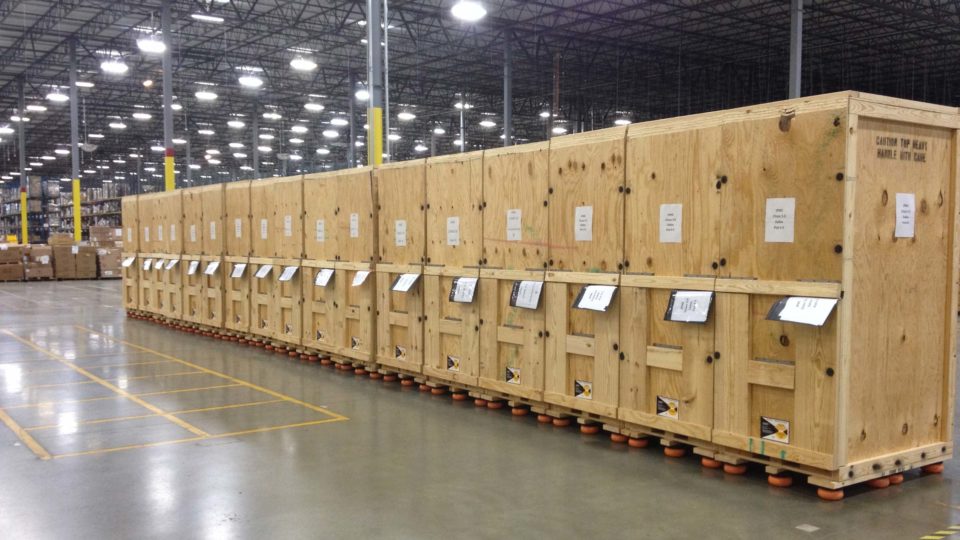Posted On November 2, 2020
Let’s talk about custom crating.
It might sound straightforward, but the world of custom crating is full of fascinating cargo, tricky challenges, and lots and lots of sawdust.
Flat World’s custom crating department is led by Steve Raetz, who’s worked at Flat World for 25 years and even grew up around the crating business. Steve and his dedicated team are our go-to for all things custom crating, and for many of our clients as well. They shared a glimpse into the crating world.
“What is it, and where is it going?”
That’s usually the first question that Steve and our crating team ask when a client approaches Flat World for a crating project. The answers to those questions often tell them most of what they need to know. Giant steel manufacturing equipment will need on-site crating. Ultra-fragile items require foam, bubble wrap or even a felt lining inside the crate. And items being shipped overseas might require a moisture barrier to prevent ocean spray or saltwater condensation in the air from rusting the items.
The possibilities are endless.
While most of the commodities our crating team works with require custom crating because they are fragile, the items themselves and the details of the crates are varied.
Flat World has built crates for items that weigh 100,000 pounds, antique vases worth a quarter million dollars, and everything from airplane wings to cockpits. Companies often choose to crate commodities that need extra security to prevent carriers and anyone handling the items from knowing what’s inside; Flat World frequently builds crates for servers shipped by private companies and the Department of Defense.
What will happen to the items once they get to their destination also comes into play when designing the crates. Flat World often builds large crates for servers going to data centers and server rooms with tight quarters. For those cases, the team designs the crates with a ramp and strong enough bracing to support the weight of the server as it is rolled out and onto the floor. And for things like dialysis machines that might need to be moved from facility to facility, Flat World builds reusable crates with latches and ramps for easy transport.
Materials matter.
Different companies use a range of materials to make crates, but Flat World sticks with the tried-and-true: nothing but CDX yellow pine plywood, ring shank nails (which have twice the withdrawal strength of smooth-shank nails and hold tight in tough conditions), and screws to make disassembling easy for the end user.
Using the best materials just makes sense when transporting large, expensive cargo. Which leads to the next point…
Custom crating is more cost-effective than you’d expect.
The cost of a crate is a lot more affordable than having freight show up damaged to its final destination. Taking into consideration both the cost of the damaged goods and the hassle of having to repair or re-buy, re-package and re-transport (plus explaining to the buyer that their items have been damaged), using custom crates is a smart investment.
And finally, the industry is changing.
While the custom crating business has remained relatively stable over the last few decades, this year led to big changes in the lumber market. With sawmills closing down due to the coronavirus pandemic, and more people starting DIY home improvement projects during lockdowns, lumber prices soared 134% year-over-year, according to Fortune. While the trend is expected to level off soon, a temporary increase in prices is something companies who use custom crating should factor into their budgets for the coming months.
Have questions about how your company could incorporate custom crating into its transportation? Let’s talk! Contact us and we’ll be in touch to discuss your company’s goals.

